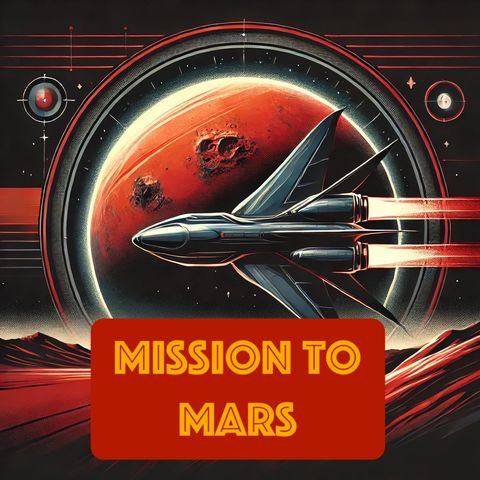Revolutionizing Space Travel: SpaceX's Starship Project Pushes the Boundaries of Interplanetary Exploration

Download and listen anywhere
Download your favorite episodes and enjoy them, wherever you are! Sign up or log in now to access offline listening.
Revolutionizing Space Travel: SpaceX's Starship Project Pushes the Boundaries of Interplanetary Exploration
This is an automatically generated transcript. Please note that complete accuracy is not guaranteed.
Description
As humanity stands on the brink of interplanetary travel, SpaceX, under the leadership of Elon Musk, is propelling the vision forward with its ambitious Starship project. Positioned to be a...
show moreThe design of Starship includes a fully reusable spacecraft and booster that promise not only to reduce the cost of access to space but also to increase the feasibility of space travel to Mars. This super heavy-lift launch vehicle is central not only to SpaceX’s plans but also to NASA's Artemis program, which aims to return humans to the Moon and eventually push forward to Mars.
However, not every test and trial runs smoothly. During a particularly notable test, with high-profile spectators including former U.S. President Donald Trump and SpaceX CEO Elon Musk, the mission faced a technical hiccup. The Starship booster, a critical component of the spacecraft, was scheduled to be caught in midair as a demonstration of its reusable capabilities. This unprecedented method of booster recovery represents a departure from traditional vertical landings performed by rockets like the Falcon 9, which uses a drone ship or a landing pad. The booster catch technique could potentially revolutionize the economics of space travel, making frequent launches and relaunches feasible due to the swift turnaround times and reduced launch costs.
However, during this test, the ambitious maneuver was aborted. While specific details on the reasons for the abort or technical difficulties encountered were not fully disclosed, such setbacks are not uncommon in the aerospace industry, where safety margins are narrow and the engineering challenges are vast.
Despite the hiccup, the test was crucial for gathering data and refining the technologies that could one day make regular manned missions to Mars a reality. Each test, whether successful or not, provides valuable insights that feed into further development and improvements of the spacecraft.
Moreover, this high-profile test highlights the growing public and governmental interest in Mars exploration. Not only does this endeavor have significant scientific implications, potentially answering questions about life beyond Earth, but it also holds the promise of sparking new technological advancements that could benefit other industries.
As SpaceX continues to innovate and push the boundaries of what is possible in aerospace technology, the world watches closely. The journey to Mars, fraught with challenges and high expectations, continues to inspire a new generation of scientists, engineers, and dreamers, all united by the common goal of extending humanity’s reach beyond our home planet.
Information
| Author | QP-4 |
| Organization | William Corbin |
| Website | - |
| Tags |
Copyright 2024 - Spreaker Inc. an iHeartMedia Company
